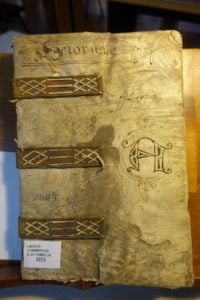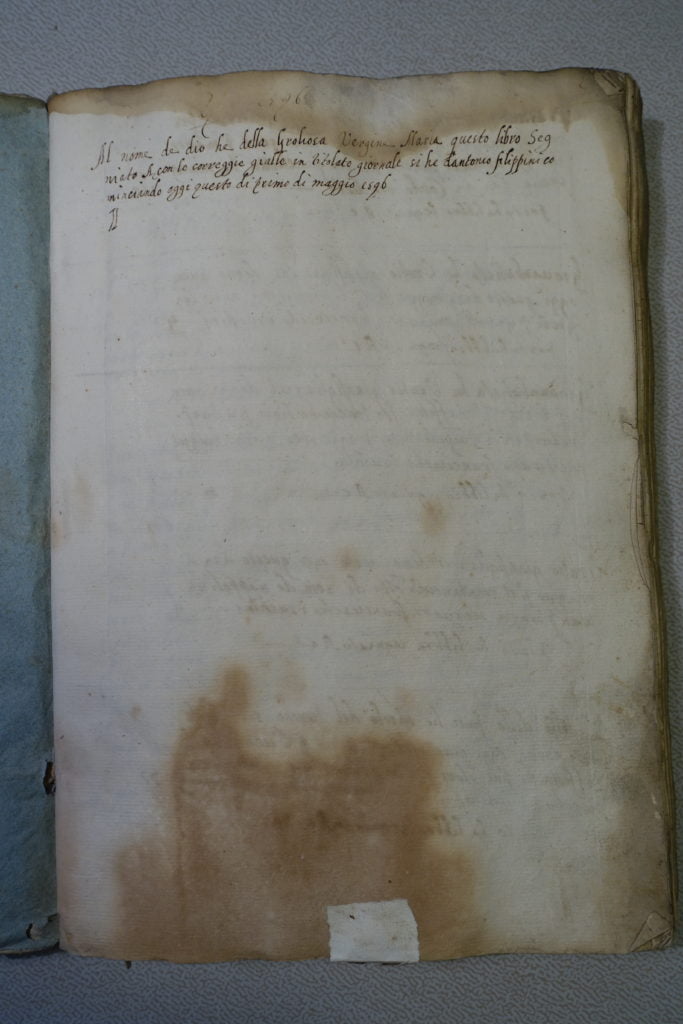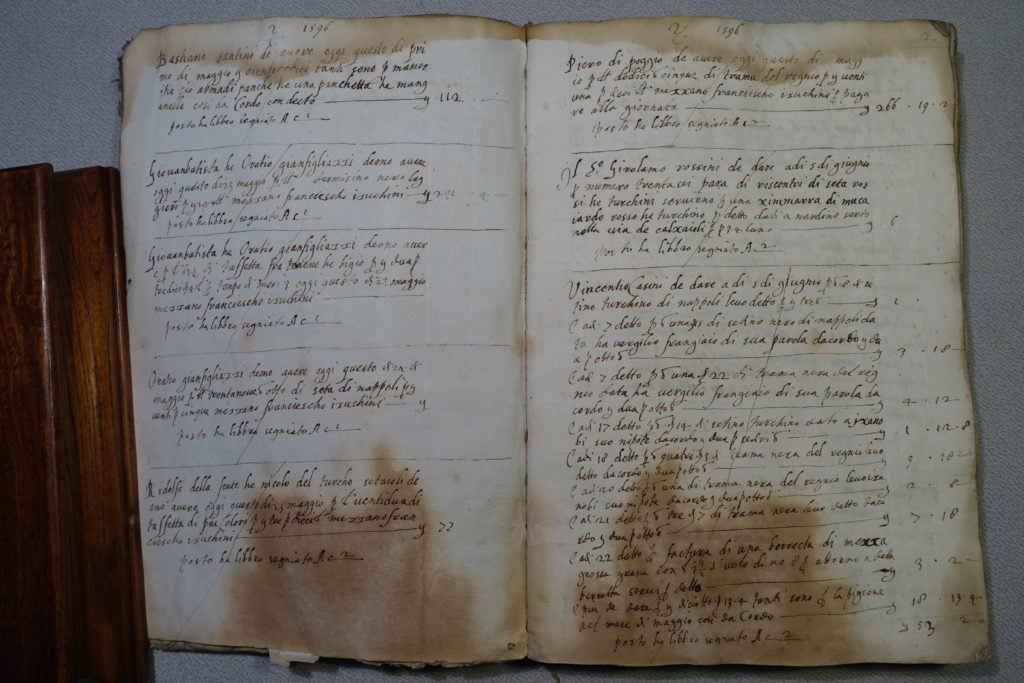Accounting Books
Bookkeeping has been used, in different forms, since the antiquity to keep track of commercial operations and exchanges. However, a significant change took place in the style of bookkeeping in the medieval period when, spurred by the growing commercial and financial activity and increasing long-distance trade, Italian merchants and firms created new ways to control their commercial and financial turnover. Companies began to keep series of books and adopted a new and a more methodical system of recording: the double entry bookkeeping. Although developments in the style of record keeping were naturally led by large commercial firms, smaller companies also began to keep a series of books, and sometimes even used double entry bookkeeping. These records helped shoemakers, smiths, second-hand dealers and other artisans and small shopkeepers to control the flow of money and goods passing through their shops and workshops, and to keep track of their credits and debits. Although there were regional differences in the way account books were kept and organized, the most common accounting books in Italian towns were the journal, used for recording all the daily transactions, and the master book (maestro) that provided an overview of the turnover of the firm.
Account books are used in our project in multiple ways. The accounts of peddlars, for instance, who sold cheap wares on the streets for ordinary consumers, can provide indispensable information about the availability and circulation of fashion manufactures and knowledge about changing styles. Since peddlers often travelled across regions and territories, their journals also tell us something about the dissemination of fashionable wares at regional, national and international levels. Account books are also useful sources for investigating the market values of textiles and clothing. This information is particularly valuable for us, since inventories (which are our main source for clothing) do not usually include indications of the market value. Finally, since these books often reported the names of the buyers, we will be able to gain a more comprehensive picture of the consumption habits of artisanal population and their access to various textile pieces, clothing items and fashion accessories.
Suggested Reading:
Elder, F. ‘Cost Accounting in the Sixteenth Century,’ The Accounting Review 12, no. 3 (1937): 226–37.
Goldtwhaite, R. A. The Building of Renaissance Florence. Baltimore: Johns Hopkins University Press, 1981.
Lane, Frederic C . ‘Double Entry Bookkeeping and Resident Merchants,’ Journal of European Economic History, 6 (1977): 177–191
Yamey, B.S. ‘Notes on the Origin of Double-Entry Bookkeeping.’ The Accounting Review 22, no. 3 (1947): 263–272
Images: Giornale per la vendita al minuto di panni lana, Filippini, merciaio e lanaiolo (Firenze, 1644–47).




